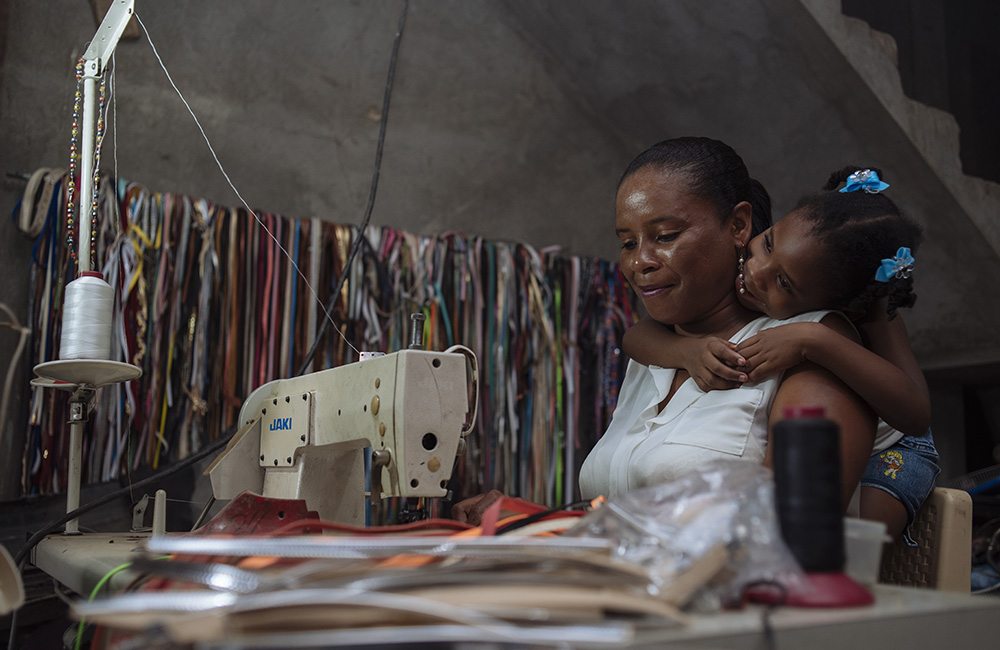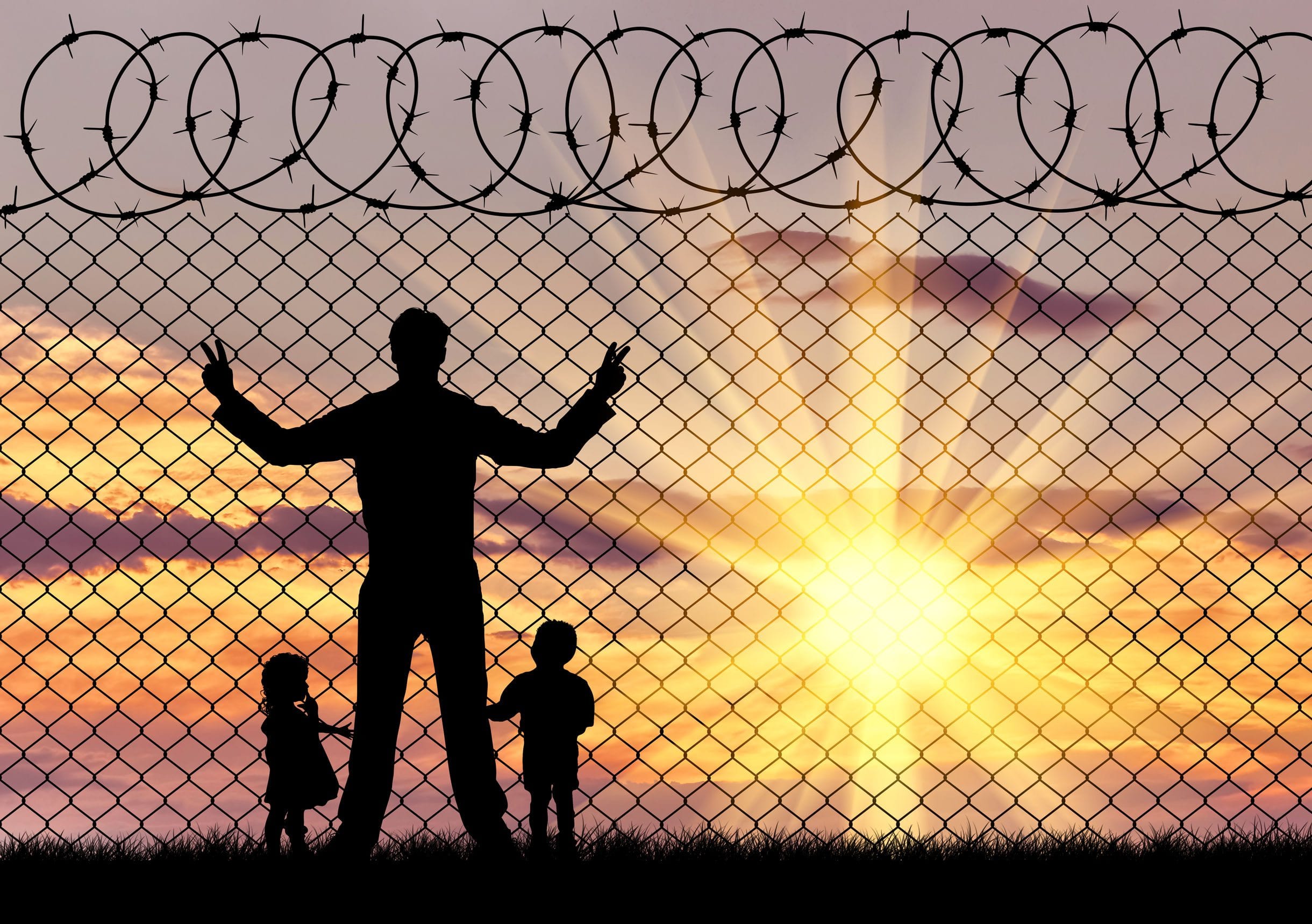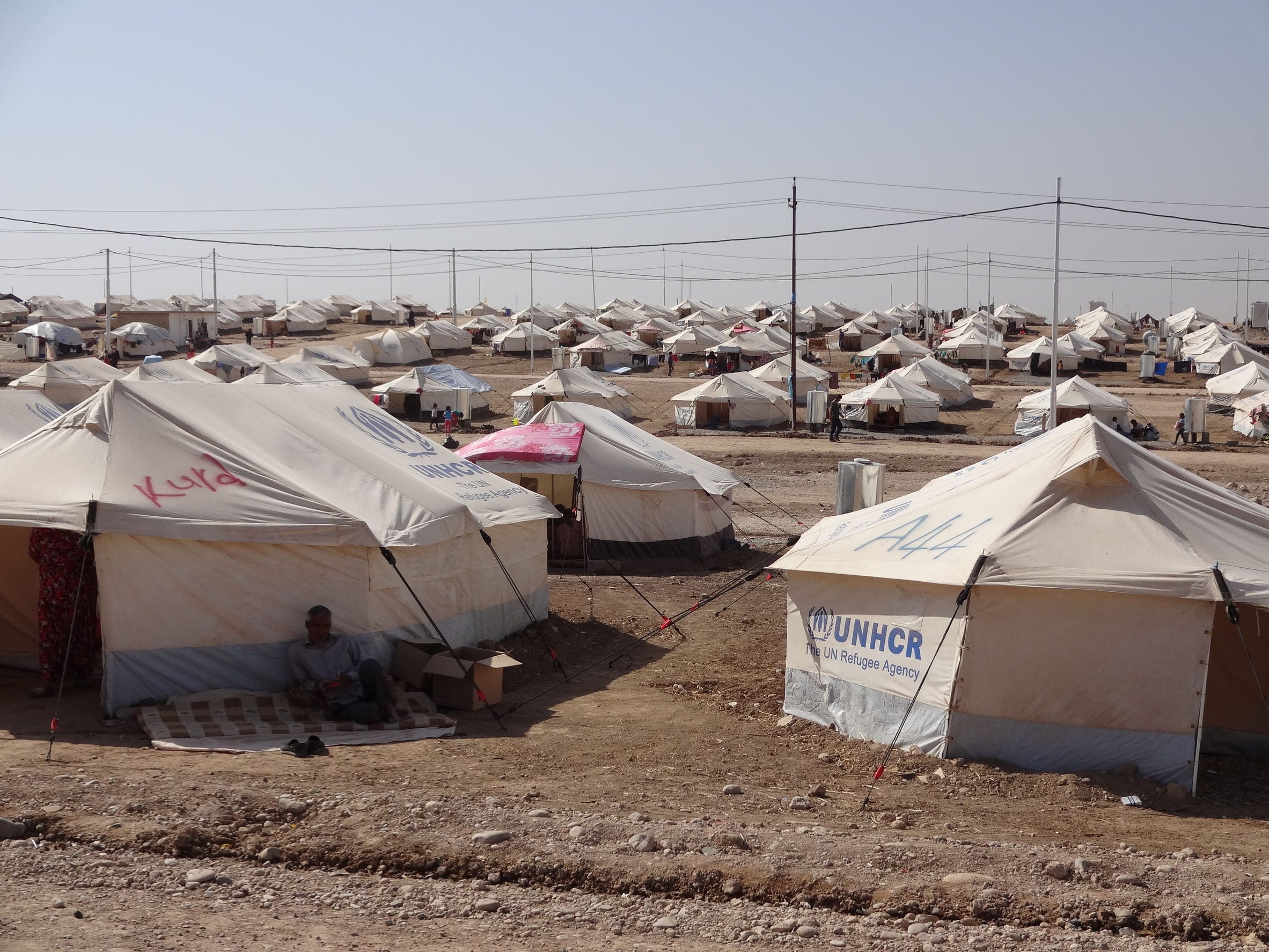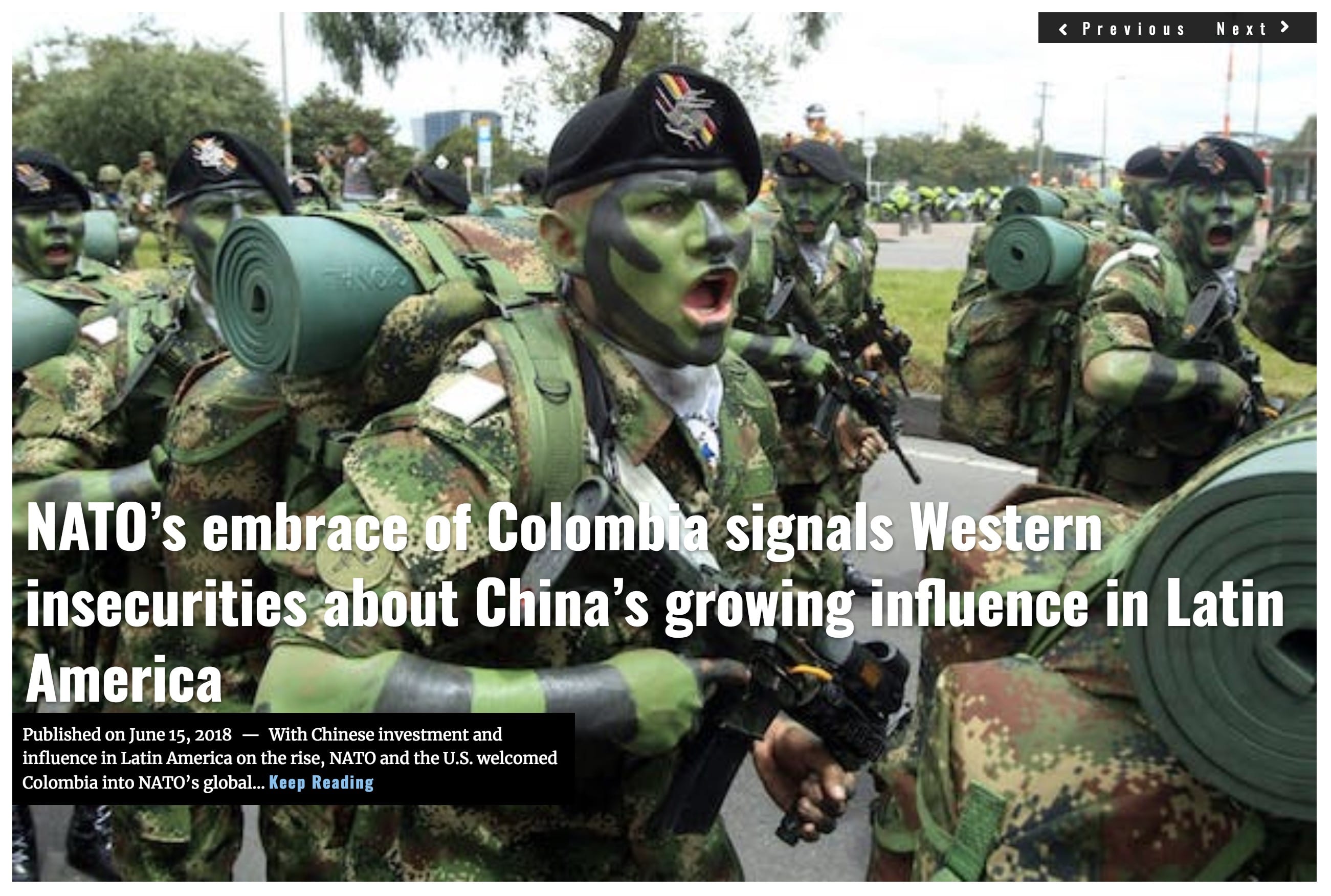Last year the number of refugees, internally displaced people, and those seeking asylum around the world exceeded 65 million. This figure surpasses even post-World War II displacement, a time when the world was forced to grapple with some of the most destructive historical events to play out on the international stage.
While it’s easy to become lost in the statistics or to bend the refugee issue to the will of a political talking point, today—on #WorldRefugeeDay—Lima Charlie News calls upon its readers to keep the stories and struggles of these men, women, and children, who have been forced to flee from their home countries, at the forefront of their minds.
Refugees belong to both history and our future.
Travel through the great avenues of the past and it becomes easy to see how cultures are mutated and then reformed by the influx of people escaping war, famine and disease. It is nothing new and, during time served in conflict zones, Lima Charlie’s veteran and service member journalists have witnessed this in effect, over and over. The issue is no longer a talking point, but becomes something palpable, something that is infused into one’s being and soul. The shadow that these refugees cast ahead of us is our own story—it is something that will come to define who we are and what our future generations will be made of.
Their paths were not inevitable. Their journeys were forced by the internal and external threats their countries faced. And, in understanding their stories, it is crucial to understand where they came from, where they wish to go, and the obstacles they have confronted during this arduous and often politicized path.
For Carme Perea, life began in Buenaventura, Colombia. Perea left her country in 2006 due to internal violence and after her brother was killed. She could not take a chance with raising her daughters in such a turbulent, dangerous environment. As a spokeswoman for #SmileWeAreIntegrating, she stands as the embodiment of strength and tolerance, having escaped to Ecuador 10 years ago and joined the refugee integration campaign upon arrival.

Through her work as a spokeswoman, Perea partnered with famed Ecuadorian shoe designer, Ile Miranda. The gladiator sandal they created together, branded “She loved me,” is a beautiful testament to the struggles of everyday women who seek a better life. The shoe wear represents the collective courage and resolve of not only the 200,000 refugees who have been forcibly displaced from Colombia, into Ecuador, since 2000, but all men and women who leave their birth countries to pursue a life of promise and safety for their families.
Last year the number of refugees, internally displaced people, and those seeking asylum around the world exceeded 65 million.
The Office of the United Nations High Commissioner for Refugees estimates that one out of every five asylum seekers in Macedonia and Serbia is a woman. These women, often outnumbered, face gender violence and constant treachery. Their routes usually begin at sea, where they have little information as to how that route is being navigated and while traveling in crafts prone to capsizing or without proper equipment to ensure safety. Upon reaching their destinations, refugee workers and camps often lack the necessary means to support their particular issues and vulnerabilities.
On March 22nd, Lima Charlie Correspondents attended a seminar at the Church Center for the United Nations entitled, “The Perilous Journey of Women Refugees Worldwide,” hosted by the Metro New York Chapter of the U.S. National Committee for UN Women (#CSW60). As it happens, the date coincided with the 60th session of the UN Commission on the Status of Women.
Ugochi Daniels, United Nations Population Fund Chief of Humanitarian Response, began her conversation with four powerful words, “Featured first, funded last.” She spoke to the known practice by which many humanitarian programs and news broadcasts feature images of suffering women and children to initially hook the attention of viewers and gain their sympathy. Afterwards, these women and children rarely, if at all, see even a fraction of the money raised.
Joan Timoney, the Women’s Refugee Commission Director of Advocacy and External Relations, followed with a disturbing statistic, that 20% of female refugees will experience an act of sexual assault during their time of forced displacement.
Lima Charlie journalists have dealt with and seen these issues—and other crises of hunger, famine, and disease posed to women, men, and children, alike—on the ground before; in Mozambique, as people made their way through flooded areas, becoming isolated and often prey to those looking to do them harm or to take what little they have. In Iraq, where families tried to escape the madness of places like Fallujah, Ramadi, and Ar Rutbah. Their only hope resting in crossings like the Trebil and Walid border points into Syria and Jordan. Now many of those same people who fled the violence of that decade flee the same thing again in countries they thought might be safe.
 Suggestions have been proposed on how to effectively mitigate this crisis, and the plight of all refugees. For some, the answer lies in European and U.S. intervention. For others, it’s the Gulf states who must shoulder the responsibility by contributing their wealth and resources to the problem. What few people discuss, however, is the role of the Iraq War and modern conflicts in the Middle East, in creating the sprouts from which the refugee crisis took root.
Suggestions have been proposed on how to effectively mitigate this crisis, and the plight of all refugees. For some, the answer lies in European and U.S. intervention. For others, it’s the Gulf states who must shoulder the responsibility by contributing their wealth and resources to the problem. What few people discuss, however, is the role of the Iraq War and modern conflicts in the Middle East, in creating the sprouts from which the refugee crisis took root.
Before delving into this, it is important to understand where a great deal of the refugee crisis is concentrated. In the European Union, the top 10 origins of people applying for asylum are Syria, Afghanistan, Iraq, Kosovo, Albania, Pakistan, Eritrea, Nigeria, Iran, and Ukraine. Many make their way to Greece, traveling along the water from Turkey to the islands of Samos, Lesvos, Kos, and Chios and most die during the passage from North Africa to Italy.
In short, Europe—particularly, Germany, Hungary, and Sweden—has been the destination of a surge of refugees larger than anything they could ever have anticipated. To exacerbate the problem, with the Schengen Agreement in place—establishing the Schengen Area in 1985—all internal border checks among its member countries were eliminated and foreign visitors can travel throughout the area with one visa, leading to vast overcrowding and undersupply of resources.
Prior to September 11th, radical insurrections were a fraction of what they are in the aftermath of the attacks on the Twin Towers. Arab governments recognized the threat posed by Al-Qaeda and Osama bin Laden and exiled this group, although it later began to grow in strength in Afghanistan. However, September 11th provided the platform upon which these radical extremists could officially engage in war with the United States.
In 2003, with the United States’ invasion of Iraq, radical sects had cemented their cause. Outraged by U.S. occupation of another Muslim country, many people from outside of the radical groups—people who would never have taken such an action prior to this U.S. decision—began donating money and ammunition to the radical cause. Al-Qaeda grew stronger than ever.
Then came the Arab Spring of 2011. With Mohamed Morsi toppled, the people had spoken, clear in their ultimate goal to rid their countries of the dictators they viewed as puppets of the West. As Syria unraveled, a vacuum was created, providing a new space for al-Qaeda and others to capitalize upon.
Modern history supports the link between the Iraq War, Arab Spring, the growth of terrorist organizations, and, ultimately, the displacement of more refugees than anyone could have foreseen. The Arab Spring began on January 15, 2011 in the northernmost African country, upon the forcing out of Tunisia’s ruler. Just three years later, Ansar al-Sharia, the radical Islamist group in the country, was added to the United States’ list of foreign terrorist groups. After the civil war emerged in Syria in the Spring of 2011, al-Nusra Front—a branch of Al-Qaeda—announced its establishment. A mere two years later, the United States added this group to its list of terrorist organizations.
When Libya’s leader was toppled in August of 2011, just two years later, the U.S. designated al-Mulathamun Battalion—also known as Those Who Sign in Blood—to its terrorist list. One year later, Ansar al-Sharia Benghazi, an Islamist militia group which claimed responsibility for the deadly September 11th, 2012 attack, was also added to the U.S.’ foreign terrorist list. The warfare, violence, and persecution that this terrorism threat has reaped is the major catalyst for the tidal wave of refugees, seeking relief in new lands. The sequences and timeline of these events are not coincidences.
With 2016 marking a level of risk for refugees for which the UN Refugee Agency knows no precedent, we cannot stand by and allow this issue to become the pet-projects of celebrities and governments. What the problem truly requires is the expertise of people used to dealing with the changing logistics and dynamics that this crisis brings. Some of the greatest successes come from individuals accustomed to operating in conflict areas. Work in these areas will continue to help alleviate some of the issues, but large problems remain.
LIMA CHARLIE NEWS
[Special thanks to Nikita Roach on the story]
Lima Charlie provides global news featuring insight & analysis by military veterans and service members Worldwide.
For up-to-date news, please follow us on twitter at @LimaCharlieNews
In case you missed it:

![Image 65 Million Refugees: Why We Need to Act On #WorldRefugeeDay [Lima Charlie News]](https://limacharlienews.com/wp-content/uploads/2016/06/WorldRefugeeDay-01.jpg)



![Image A Russian proposal to the refugees of Syria [Lima Charlie News][Photo: Louisa Gouliamaki / AFP]](https://limacharlienews.com/wp-content/uploads/2018/07/A-Russian-proposal-to-the-refugees-of-Syria-480x384.jpg)
![Image South Korea struggles to increase low fertility rates. Could refugees help? [Lima Charlie News] (AP Photo/WFP, Ho)](https://limacharlienews.com/wp-content/uploads/2018/07/South-Korea-struggles-to-increase-low-fertility-rates.-Could-refugees-help-480x384.jpg)
![Image Cameroonian refugees rush to Nigeria to escape conflict between English speakers and French speakers [Image: UNHCR / Elizabeth Mpimbaza]](https://limacharlienews.com/wp-content/uploads/2018/01/Cameroonian-refugees-rush-to-Nigeria-to-escape-conflict-between-English-speakers-and-French-speakers-480x384.jpg)

![Image World Press Freedom Day has us asking ‘What is the state of free press in democracies worldwide, and why has America’s free press ranking dropped?' [Lima Charlie News]](https://limacharlienews.com/wp-content/uploads/2019/05/World-Press-Freedom-Day-01-480x384.png)
![Image [Women's Day Warriors - Africa's queens, rebels and freedom fighters][Lima Charlie News]](https://limacharlienews.com/wp-content/uploads/2019/03/Womens-Day-Warriors-Lima-Charlie-News-480x384.jpg)
](https://limacharlienews.com/wp-content/uploads/2018/08/XBVUKTNZ5BHAJJOW22KSUJHS74-480x384.jpg)

![Image A Russian proposal to the refugees of Syria [Lima Charlie News][Photo: Louisa Gouliamaki / AFP]](https://limacharlienews.com/wp-content/uploads/2018/07/A-Russian-proposal-to-the-refugees-of-Syria-150x100.jpg)
![Image South Korea struggles to increase low fertility rates. Could refugees help? [Lima Charlie News] (AP Photo/WFP, Ho)](https://limacharlienews.com/wp-content/uploads/2018/07/South-Korea-struggles-to-increase-low-fertility-rates.-Could-refugees-help-150x100.jpg)